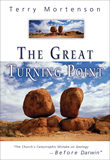Real Scientists, Really?
The claims of evolutionists and some old-earth creationists that a young-earth creationists don't have real degrees and don't do real scientific research that can be published are simply not true.
Evolutionists and some old-earth creationists frequently charge that scientists who believe in a young earth don't have real degrees and don't do real scientific research that can be published in peer-reviewed secular scientific journals. A recent conference once again has refuted that canard.
During June 15-17, 2005, New St. Andrews College in Moscow, Idaho, USA, was the host to the fourth Baraminology1 Study Group Conference called "A Grander View of Life."2 About 40 people, mostly biologists, came to hear 17 interesting presentations from papers covering diverse topics (there was also a "poster session" one evening for four presentations).
Two papers dealt with the proper classification of whales (showing them to be very distinct from any other kind of creature), while another explained and illustrated the relationship between the Bible and scientific research. The latter paper included a fascinating discussion of a massive whale fossil graveyard in the deserts of Peru that gives clear evidence of catastrophic, rapid burial and fossilization, contrary to the evolutionary story that the 80-meter-thick formation containing the whales was formed slowly over the course of several millions of years. The biblical framework of the Christian paleontologists provided "the glasses to see" the evidence that the evolutionists were blind to because of their naturalistic worldview. The evidence shows that the whales and sediments were in fact deposited in weeks (or months at the most). Studies to date are insufficient to say for sure whether that deposition was during Noah's Flood or due to a localized catastrophe in the post-Flood period.
Two Old Testament scholars presented papers. One gave strong evidence from a detailed statistical analysis of the verb forms used in Genesis 1 to show with 99.5% certainty that the chapter is historical narrative, not poetry, and therefore, although it is teaching theological truths, it is also a guide to understanding the scientific evidence related to the origin and history of the creation. The scholar also briefly discussed biblical evidence that man is distinct from other animals and that, unlike man and animals, plants are not living in the biblical sense.
The other OT scholar presented biblical evidence that God cares for the animals, and commands man (who is the image of God) also to care for the animals. He then argued that this fact (and what it reveals about the character of God) is inconsistent with the idea of millions of years. That is, the sedimentary rocks containing billions of fossilized animals that supposedly lived and died (even violently) long before man was created (and sinned) would not reflect a caring God, but a cruel, bumbling Creator. But we have no such inconsistency if we attribute those sediments and fossils to the Flood, which was an expression of the just wrath of God on a world corrupted by man's wickedness.
One paper was a complicated discussion of how "systems theory" from the computer world could be used to help define design in living creatures. Other, more widely understandable, papers were on such topics as:
-
diversification of plants by means of polyploidy (aberrant cell division that produces multiple sets of chromosomes in the cells)
-
stress-directed adaptive mutations in bacteria
-
the place of extinctions in the history of life
-
an analysis of students' classification of tetrapods (mammals, reptiles, amphibians and birds) by only viewing photographs of the creatures
-
possible post-Flood genetic changes in humans causing shorter lifespans (as reflected in the Genesis genealogies)
-
classification of snakes
-
classification of whales
-
a molecular tool for investigating variation within and between the original created kinds
-
protein interactions in yeast
A recent graduate of The Master's College in California gave a fascinating paper summarizing the results of her and other students' research (under the direction of her biology professor who was at the conference) on the earthworm immune system. They are wonderfully designed "critters."
Another paper explained a radically different non-majors biology course to fulfill general education requirements. The course was organized according to the centralizing theme of God's nature. Each topic in the course was introduced by connecting it to one of the Creator's attributes. So, for example, the fact that God:
-
is living introduced the study of the definition of life-and life's beginning and end and the law of biogenesis.
-
is spirit led into a discussion of the non-physical aspect of life, the failure of naturalism to explain life and the inference of the Unseen from the seen.
-
desires to be known provides a basis for science's proper theological foundations, philosophy of science and a certain knowledge of the Creator through the study of living things.
Also, His glory introduces the discussion of biological beauty, God's omniscience led to the topics of design, complexity and integration of complexity in living creatures and God's holiness was the backdrop for considering carnivory and biological imperfections.3
The professor said the response of the non-biology major students in the two years that he taught the course was very exciting. Unfortunately, the other biology professors at this Christian college didn't like the course, preferring to stick with the "traditional structure" of a biology course for non-majors (which, he said, bores most students and teaches them little biology that really sticks with them in life).
Don't believe the lie that creationists are not real scientists doing real scientific research.
The final paper was a very interesting analysis of eight groups of animals (e.g., finches, cormorants, lizards, penguins, turtles) and plants (sunflowers) on the Galapagos Islands, where Darwin made his famous studies in the 1830s. The author showed that Darwin had indeed found evidence of common descent (the creatures on the islands had descended from similar kinds on the mainland), but that Darwin was probably wrong about natural selection being the mechanism effecting this change in these cases (note that natural selection per se is not a problem to the creation model in any case). The unique creatures on the Galapagos fit the creation model developed from the Bible far better than they fit the evolution (molecules to man) hypothesis.
It was encouraging to see the quality of research that these creation scientists were doing. Don't believe the lie that creationists are not real scientists doing real scientific research.
Another attendee of the conference is a chemistry professor at a Christian college in Canada. He was taught theistic evolution when he attended a Christian college for his undergraduate degree. He has since abandoned that position in favor of the intelligent design view. I tried to discuss with him the problem of animal death before the Fall in the old-earth view, but he tried to evade the issue by saying he "was a chemist." I said that this was not a matter of science but of the Word of God, and that for us as Christians it is critically important what we believe about death, because what the Bible says about death is foundational to the gospel. I also tried to gently impress upon him the fact that the order of creation events in Genesis 1 is very contradictory to the order of events in the evolutionary hypothesis (and the long-age creation view) about the history of the cosmos, earth and life forms.4
After the paper by the OT scholar showing that Genesis 1 is narrative, I engaged him again. He seemed relatively unmoved by the argument of the paper, relying instead on something one of his theistic evolutionist professors had taught years ago. So I backed off. It appeared that he was not really willing to submit to the authority of Scripture. It grieves me greatly when I see this willful ignoring of Scripture as a result of a "Christian education."
We need more young scientists who can contribute to the development of the creationist scientific model as an alternative to the evolution/old-earth hypothesis. But first, parents need to expose their science-inclined children in their growing-up years to good creationist resources (both written and audio-visual) to ground them in the truth of Genesis and the real truths of God's creation. By doing that, these young people probably won't be led astray by the so-called "knowledge" that they will encounter at secular (and even many Christian) universities or colleges.
Footnotes
- Baraminology is the creationist study of living creatures to attempt to define the taxanomic boundaries of the original created kinds. "Baramin" comes from the Hebrew words bara (to create) and min (kind), both used in Genesis 1 and elsewhere in the Old Testament. See all footnotes
- For details see www.bryancore.org/bsg/grander05/. See all footnotes
- For related thoughts on this subject see “Why Does God’s Creation Include Death and Suffering?” See all footnotes
- See “Could God Really Have Created Everything in Six Days?,” especially the blue chart near the end of the article. See all footnotes
Recommended Resources

Answers in Genesis is an apologetics ministry, dedicated to helping Christians defend their faith and proclaim the good news of Jesus Christ.
- Customer Service 800.778.3390
- © 2025 Answers in Genesis








